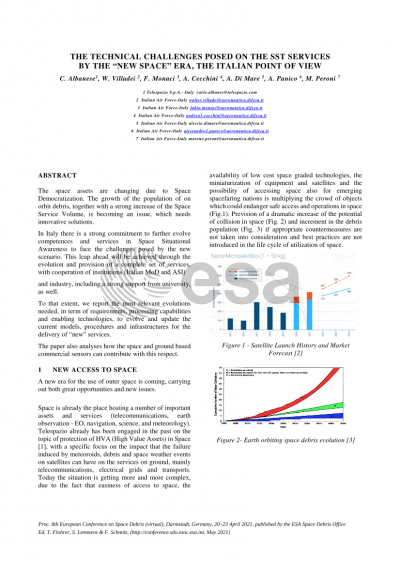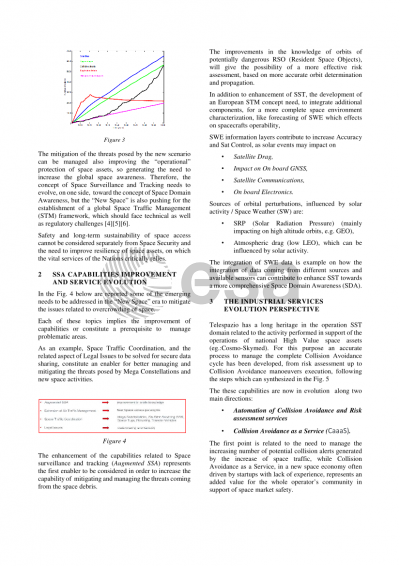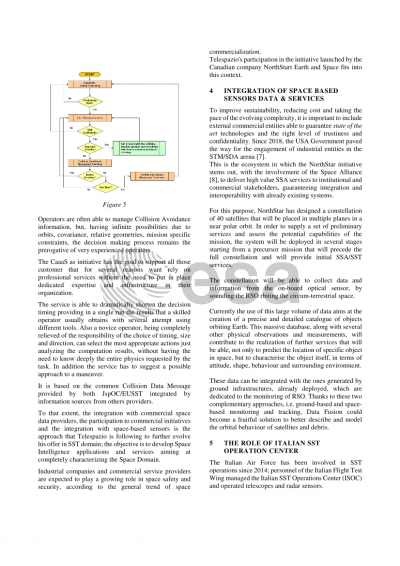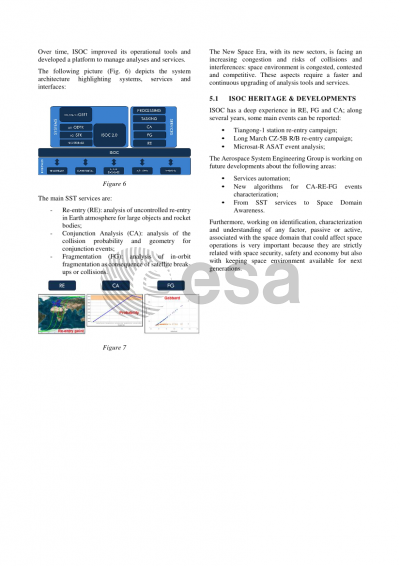Document details

Abstract
The growth of the population of in orbit debris, together with a strong increase of the Space Service Volume, is becoming an issue which needs innovative solutions; this is particularly true considering how rapidly the space assets are changing, starting from the last decade, when Space Democratization has simplified procurement of space assets and access to space.
The above scenario is pushing national, international organizations and governments to develop new capabilities, and improve existing ones, to protect their High Value Space Assets, the critical services, relying on them, and the citizens’ lives. On that respect USA and Europe have a pioneering role, and their approaches provide interesting insights for further analysis.
One of the main pillars of the European EU-SST program is the provision of information and capabilities by each State participating to the program.
Following this approach, in Italy there is a strong commitment to further evolve the already significant competences in Space Situational Awareness services to face the challenges posed by the new scenario. This leap ahead will be achieved through the evolution and provision of a complete set of services, with cooperation of institutions (Italian MoD and ASI) and industry, including a strong support from university, as well.
To that extent, the paper identifies and reports the most relevant innovations needed, in term of requirements, processing capabilities and enabling technologies, to evolve and update the current models, procedures and infrastructures for the delivery of “new” services.
The paper also analyzes how the integration of space and ground based commercial sensors can contribute with this respect.
The study analyzes specific Use Cases based on the current available capabilities, in ISOC (Italian SST Operation Centre) and in Telespazio, in the fields of (i) operational conjunction assessment, (ii) collision avoidance and (iii) on-orbit re-entry and fragmentation, applied to a specific incident.
It addresses how risk has been identified so far, applying the current methodology together with a deep operational knowledge and how activation of specific risk mitigation actions and maneuvers have been implemented to manage, secure and extend High Value Space Assets life. This approach helps to identify which aspects have to evolve and improve in order to face the challenges that the “New Space” is posing.
A final remark is provided on how the above-mentioned foundational services can contribute to the establishment of a national and European Space Domain Awareness concept.
Preview






